On View
Damien Hirst Takes Over France’s Château La Coste
The YBA artist is the subject of a new show at Château La Coste.
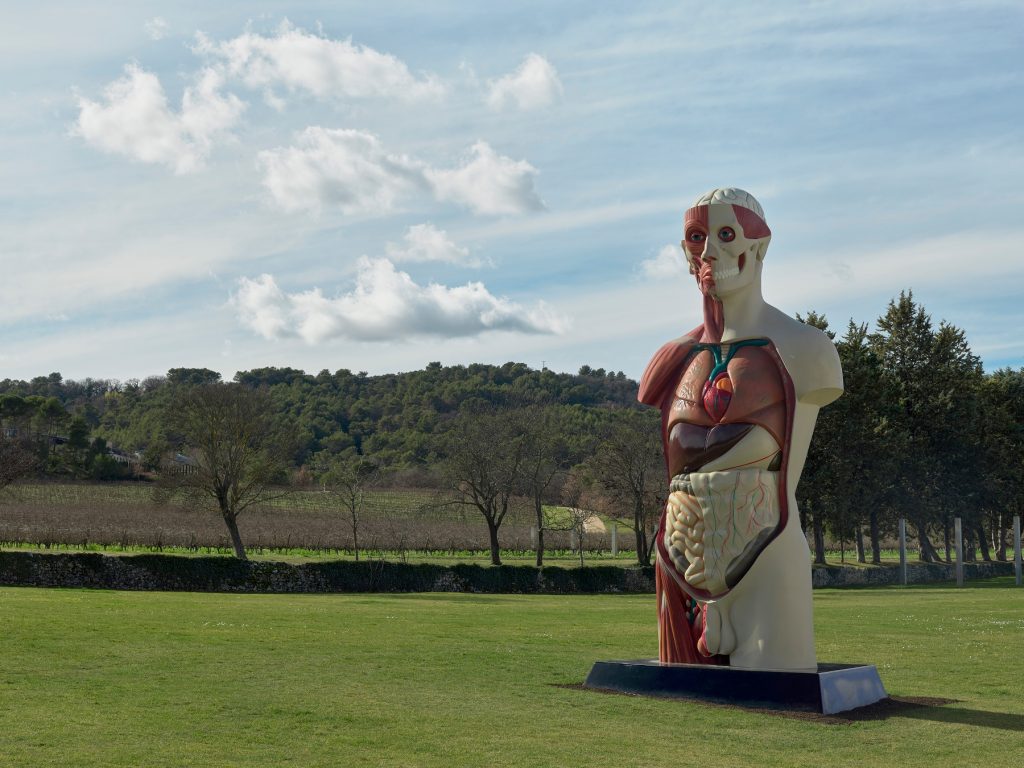
The YBA artist is the subject of a new show at Château La Coste.

Jo Lawson-Tancred

Damien Hirst has brought his infamous preserved animal carcasses and shiny Mickey Mouse sculptures to the sloping hills of southern France. “Damien Hirst: The Light That Shines” at Château La Coste presents a sweeping survey of around 90 of the YBA artist’s historic and recent artworks.
Nestled in one of the country’s oldest winemaking regions near Aix-en-Provence, the 500-acre vineyard has been converted into a hotel and a destination for contemporary art. Hirst’s show marks the first time a single artist has had full run of the compound.
“Amid laughs and giggles, chats and cups of tea, great ideas evolved as they do when Damien is his playful self,” said the institution’s founder, the property tycoon and hotelier Paddy McKillen. “He has planned out the show to perfection. He has conceived each element to compliment both art and architecture, all set amongst Cezanne’s Provençal landscape.”
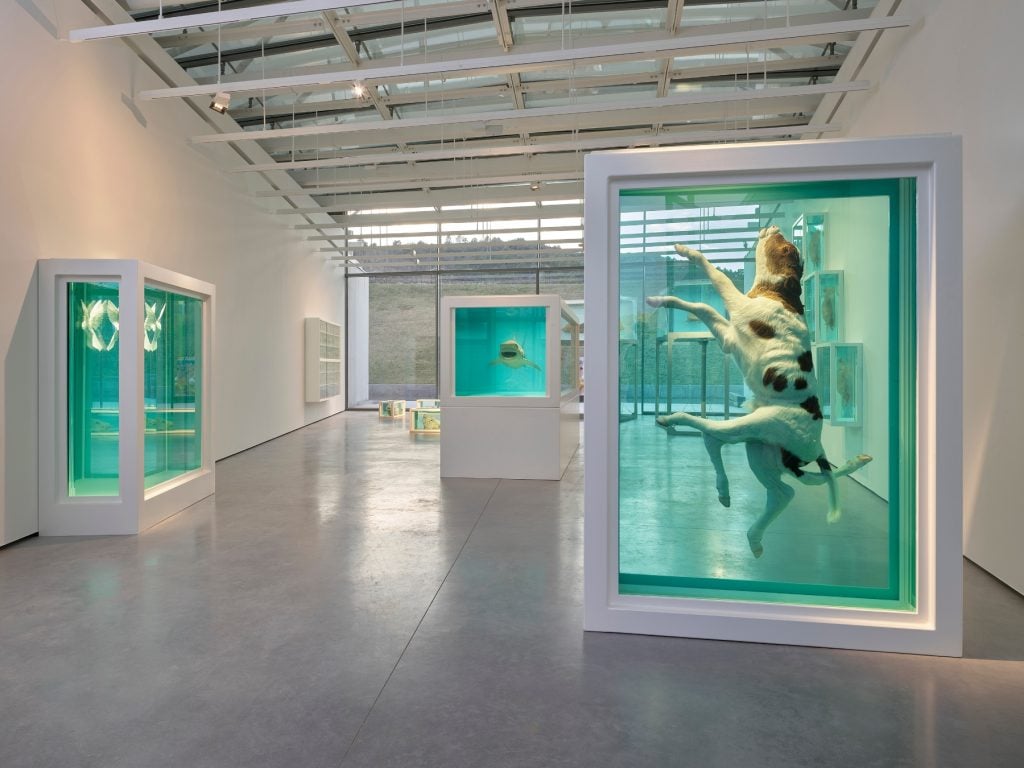
Works from the “Natural History” series at “Damien Hirst: The Light That Shines” at Château La Coste, March 2–June 23, 2024. Photo: Prudence Cuming Associates Ltd, © Damien Hirst and Science Ltd. All rights reserved, DACS/Artimage 2024.
Over a multi-decade career, Hirst has produced more than enough work to fill the site’s five unique architectural pavilions. The dead animals preserved in formaldehyde for which he is most notorious are being exhibited in a pavilion by Italian starchitect Renzo Piano. Early attention-grabbing examples from the “Natural History” series, as well as their multi-million dollar price tags, catapulted Hirst into the public eye in the 1990s.
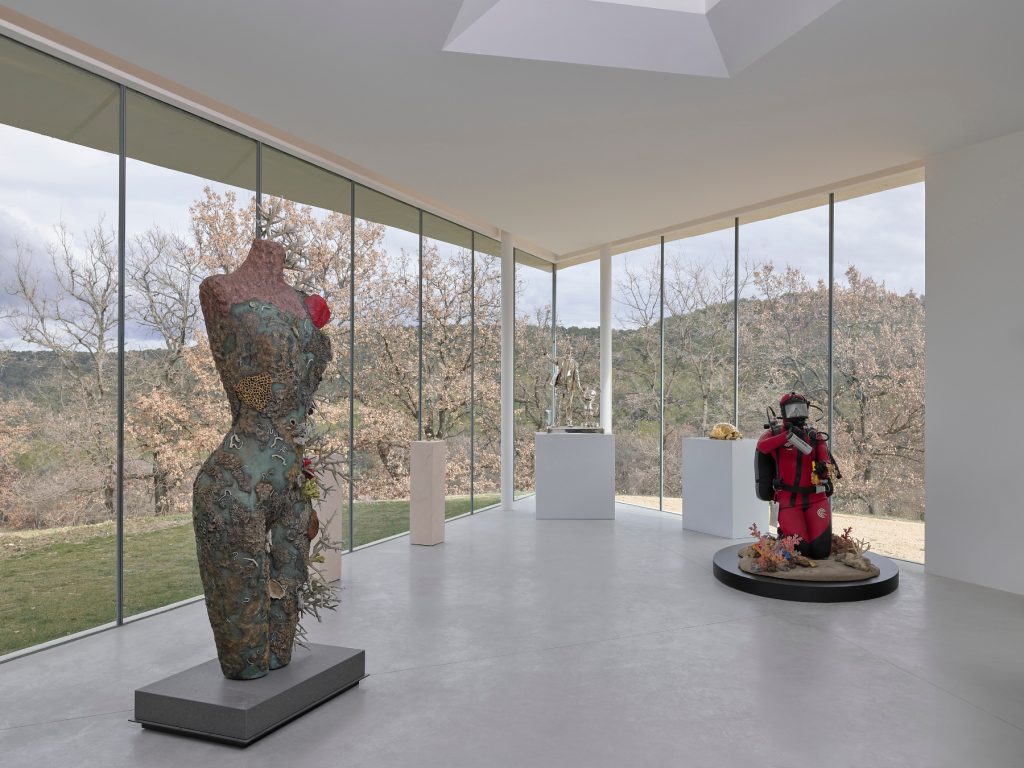
Pieces from Treasures from the Wreck of the Unbelievable at “Damien Hirst: The Light That Shines” at Château La Coste, March 2–June 23, 2024. Photo: Prudence Cuming Associates Ltd, © Damien Hirst and Science Ltd. All rights reserved, DACS/Artimage 2024.
Another pavilion, designed by the late Brazilian architect Oscar Niemeyer, showcases Treasures from the Wreck of the Unbelieveable (2017), which was originally debuted by the Pinault Foundation at the 57th Venice Biennale. These works are all imagined as the heavily patinated, coral-encrusted treasures retrieved from a fantastical ancient shipwreck off the coast of East Africa.
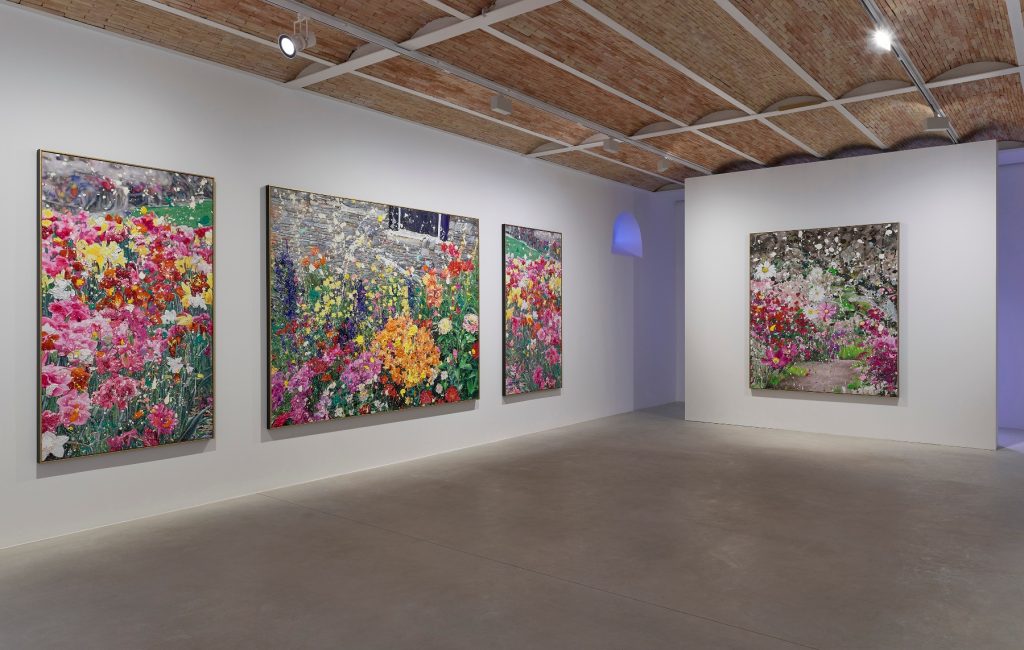
Flower paintings at “Damien Hirst: The Light That Shines” at Château La Coste, March 2–June 23, 2024. Photo: Prudence Cuming Associates Ltd, © Damien Hirst and Science Ltd. All rights reserved, DACS/Artimage 2024.
Elsewhere, garishly colored flowers from The Secret Gardens Paintings series will be familiar to anyone who checked out Gagosian’s booth at Frieze London last year. As flower paintings go, the works provoked some fiercely mixed reactions and seemed to set the tone for a turn towards whimsical escapism in contemporary art. Butterflies, a common motif in Hirst’s work, also appear many times over in the swirling red kaleidoscopes of The Empress Paintings.
Hirst has also made good use of the château’s ample outdoor space to stage mammoth sculptural works. The 21-foot painted bronze sculpture Temple (2008) resembles a male torso as one might have seen in biology class at school. Successive cut-away sections of the body allow us to glimpse the figure’s organs and musculature. Charity (2002), which once stood beside The Gherkin in London, wryly takes an old charity collection box and turns it into a monument, but one that has evidently been ransacked and its coins seized.
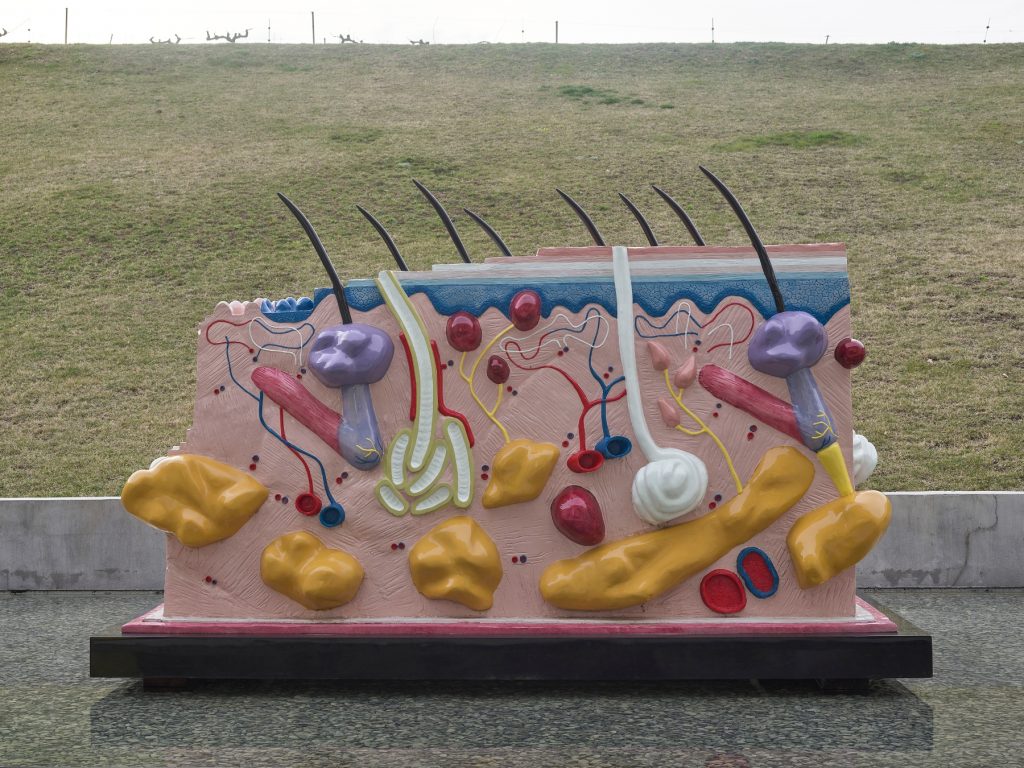
Outdoor sculpture at “Damien Hirst: The Light That Shines” at Château La Coste, March 2–June 23, 2024. Photo: Prudence Cuming Associates Ltd, © Damien Hirst and Science Ltd. All rights reserved, DACS/Artimage 2024.
As part of the château’s ever-evolving sculpture park program, McKillen also regularly commissions new site-specific works. Hirst has dreamed up a chapel that will take the form of a 100-foot-high bronze hand pointing skywards.
“I designed this arm as a sculpture. It was based on a hand holding a mobile phone. But it was a bit like Christ’s fingers,” Hirst said. “And then I thought, it’s like a spire. It was Paddy’s idea to put steps inside it so you could go up it.” The chapel is scheduled to open in 2025.
The holy hand joins an array of high-profile permanent installations that dot the rolling vineyards and wooded walking trails of the property, including works by artists and architects like Louise Bourgeois, Hiroshi Sugimoto, Tracey Emin, and Sophie Calle.
“Damien Hirst: The Light That Shines” is presented by HENI. It is on view at Château La Coste until June 23, 2024.